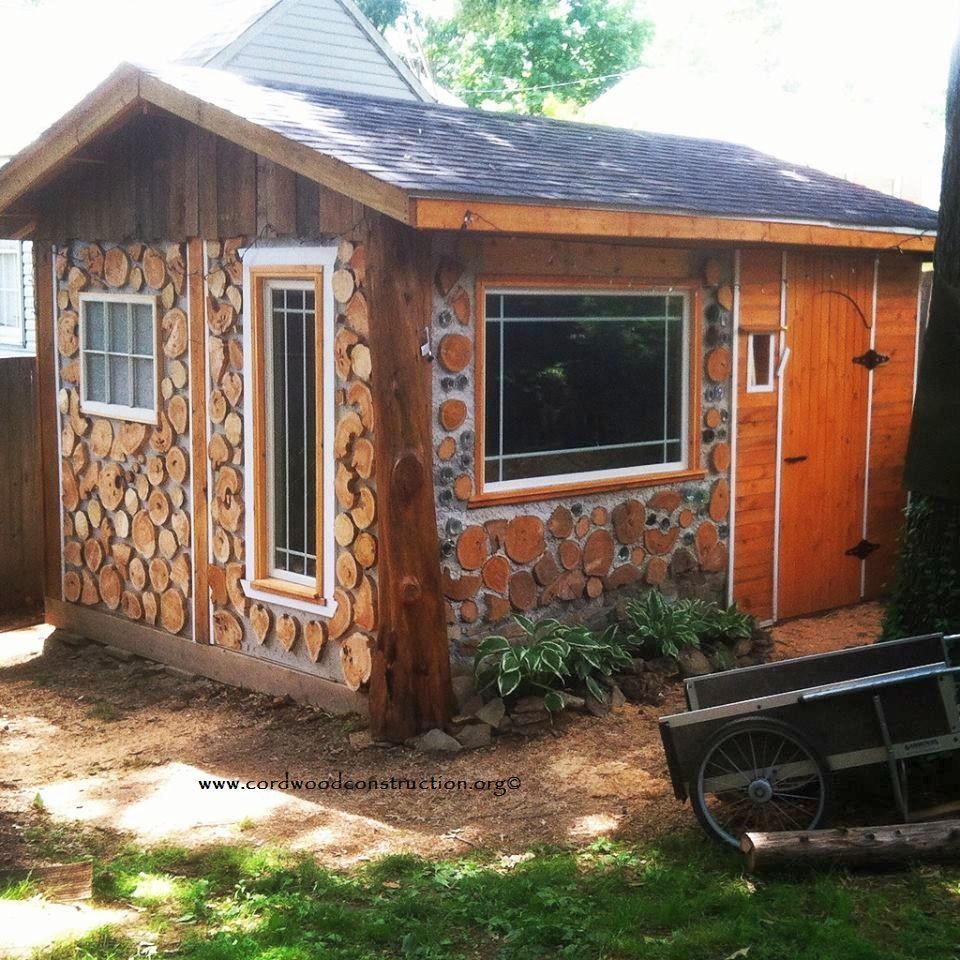What is the one thing that will destroy a conventional foundation? Water (freezing, thawing, and heaving). Frank Lloyd Wright (among others) figured out a way to move water away from the foundation. He called it a Rubble Trench. It is basically a trench dug around the perimeter of the proposed foundation, which then has drain tile sloped to “daylight.” The idea is that the weight of the foundation will be spread out and the water will be funneled away. Before you dig, it is important to remove all the organic matter (grass, weeds, roots, and topsoil) from the foundation site. Use a backhoe or dig it by hand? Your choice. Kurt dug his entire rubble trench by hand. Digging by hand provides a good workout. Machinery helps if you have roots and big rocks to move or you just want to expedite your project.
Digging by hand provides a good workout. Machinery helps if you have roots and big rocks to move or you just want to expedite your project.  The drain tile has gravel below and on top. It is then tamped.
The drain tile has gravel below and on top. It is then tamped.  A rubble trench lowers the cost of your building project: Excavation, fill, and materials (gravel rather than a concrete footer or blocks) are reduced.
A rubble trench lowers the cost of your building project: Excavation, fill, and materials (gravel rather than a concrete footer or blocks) are reduced.  The center is filled with sand and the perimeter is tamped.
The center is filled with sand and the perimeter is tamped.  It can be topped with a FPSF (Frost Protected Shallow Foundation), or a Grade Beam (below).
It can be topped with a FPSF (Frost Protected Shallow Foundation), or a Grade Beam (below). Or the sill plates for the foundation can be made from naturally rot resistant, pressure treated or fire treated wood.
Or the sill plates for the foundation can be made from naturally rot resistant, pressure treated or fire treated wood.  Creativity is only limited by your imagination.
Creativity is only limited by your imagination.
 One schematic of a rubble trench (there are many variations).
One schematic of a rubble trench (there are many variations).
![]()
Below is an architectural rendering of how the rubble trench, foundation, cordwood and roof all tie-in together.
 Before you start on any building project you should consult with qualified experts to make sure you are using the correct materials and load calculations. The FPSF (Frost Protected Shallow Foundation) is placed over the Rubble Trench like in the drawing. Here are the specifics of how and why. https://www.finehomebuilding.com/2010/11/11/frost-protected-shallow-foundations-2
Before you start on any building project you should consult with qualified experts to make sure you are using the correct materials and load calculations. The FPSF (Frost Protected Shallow Foundation) is placed over the Rubble Trench like in the drawing. Here are the specifics of how and why. https://www.finehomebuilding.com/2010/11/11/frost-protected-shallow-foundations-2
Should you wish to learn how to build a cordwood cottage, cabin or home, please visit www.cordwoodconstruction.org While you are there, click on the pictures, read the brief articles, check out the latest workshops and newsletter and if you are interested click on the Online Bookstore to see all the cordwood literature available in print and ebook format.![]() If you have questions that aren’t answered on the website you can email me at richardflatau@gmail.com
If you have questions that aren’t answered on the website you can email me at richardflatau@gmail.com
Readers have requested a brief bio, so here goes:
Richard & Becky Flatau built their mortgage-free cordwood home in 1979 in Merrill, Wisconsin. Since then, they have written books, conducted workshops, facilitated the 2005, 2011 and 2015 Cordwood Conferences and provided consultation for thousands of cordwood builders. Cordwood Construction: Best Practices DVD, Cordwood Construction Best Practices (print) and Cordwood Conference Papers 2015 are the newest publications available from their online cordwood bookstore. www.cordwoodconstruction.org
Here is a picture of the Cordwood Workshop Video cover, featuring the Cordwood Education Center.
For more information on Cordwood Construction, click on the picture or visit www.cordwoodconstruction.org Below is the 30 item Video menu.
![]()
![]()














